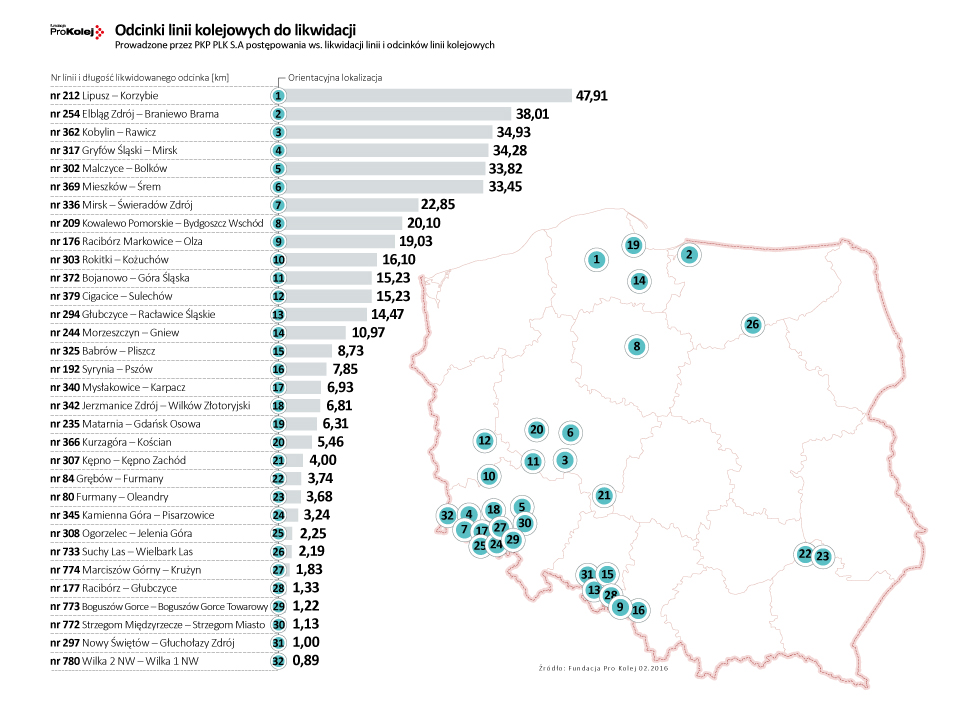400 km of railway lines to be liquidated
ProKolej Foundation has published a list of over 400 railway lines to be liquidated by PKP Polskie Linie Kolejowe S.A. The plan covers 9 provinces, 32 sections and nearly 2.1% of the national railway network (425 km). In the opinion of experts, the main consequence of the liquidation of railway infrastructure will be permanent degradation of the social and economic potential of poorly communicated areas of Poland. The envisaged savings will be illusory.
In accordance with the information received from PKP Polskie Linie Kolejowe S.A., Frombork, Tolkmicko, Mirsk, Świeradów Zdrój, Miejska Górka, Góra Śląska, Karpacz, Mysłakowice, Kowary and Gniew will be irrevocably cut off railway connections.
– Cutting off spa towns such as Karpacz and Świeradów Zdrój or Frombork, the city of Copernicus, located at Zalew Wiślany, of railway connections is contrary to the development plans for those regions. The labour market and economy depend here directly on the number of tourists – says Jakub Majewski, PhD, from ProKolej Foundation. – What is more, liquidation of railway lines in each of those localities deprives them of some development potential, and being dependent only on cars is contrary to the basic assumptions of EU transportation policy. That is why, the plan should be abandoned.
PKP PLK S.A., responsible for railway network, emphasises that the liquidation procedure does not need to be tantamount to final liquidation, and in the event of external financing, the procedure will be ceased. However, in the notices sent to local authorities, the rail company admits that if no funds are raised, the lines will be liquidated.
In its standpoint, ProKolej Foundation stresses that the railway line, even if it is not currently used, or the area it covers, is a unique reserve for future infrastructure investments. It is thoughtless to ignore this potential for future social mobility and economic effectiveness of adjacent areas.
The list of pending liquidation procedures of PKP PLK S.A. railway lines /sites/default/files/wykaz_likwidowanych_linii_kolejowych.pdf


